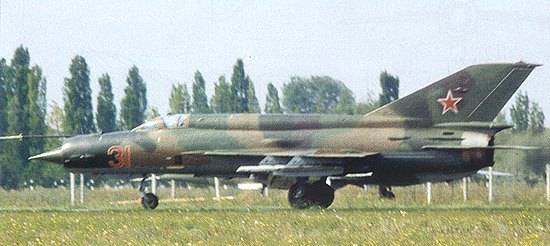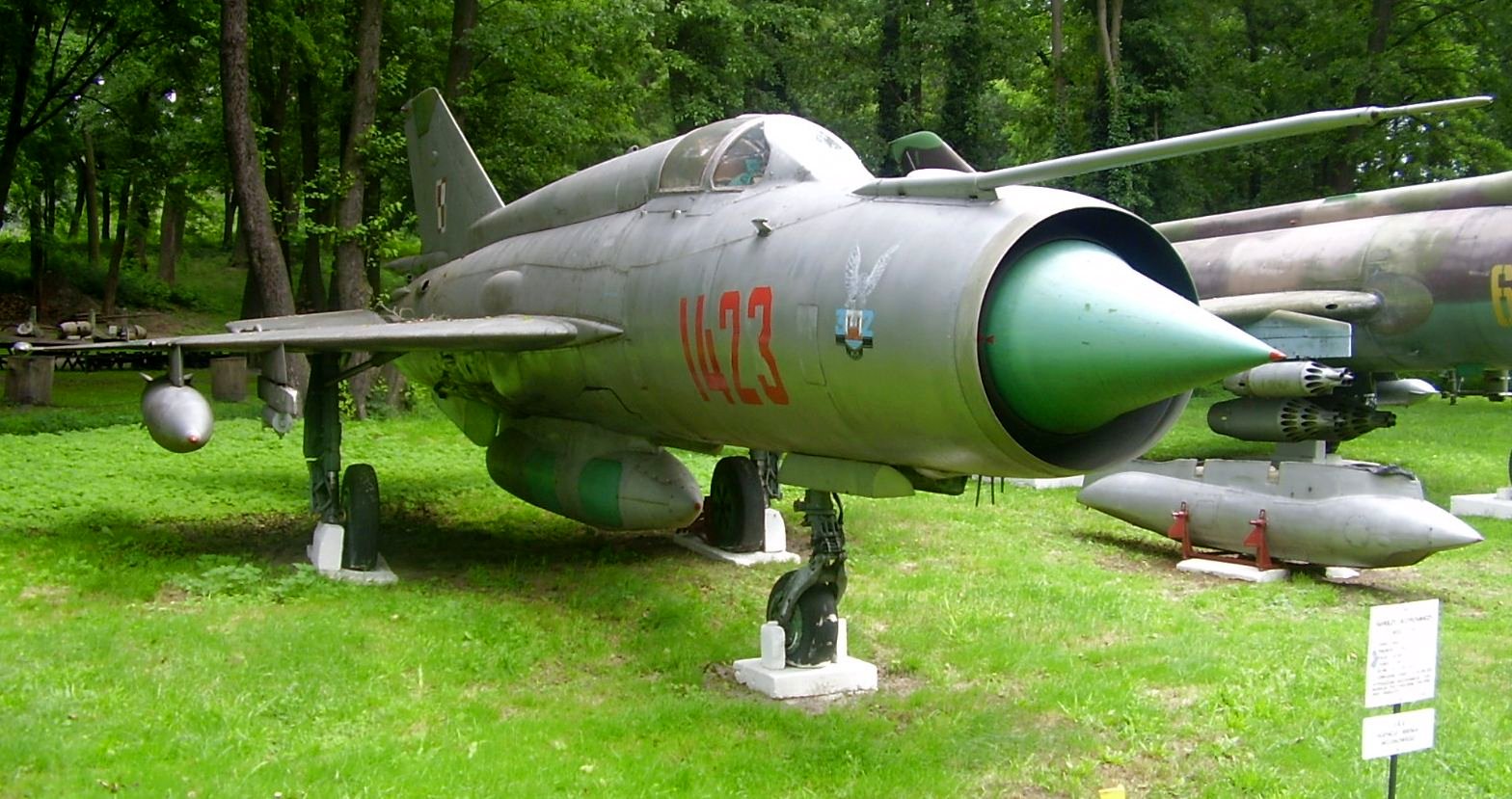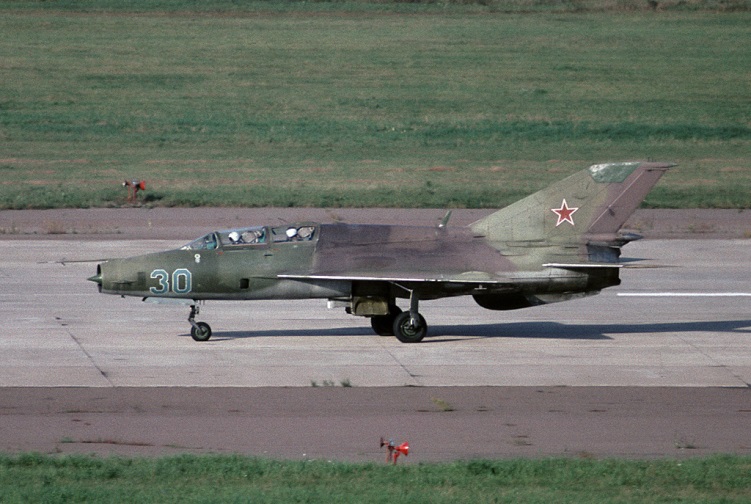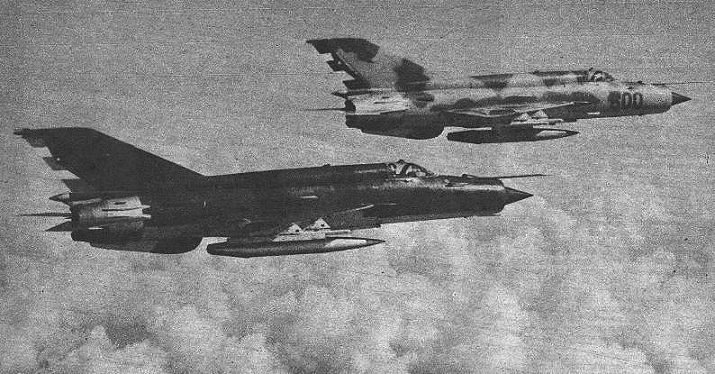
MiG-21 ‘Fishbed’Although over 11,000 Fishbeds were built and production did not end until 1985, only about 2000 remain in service with the Soviet Air Forces (VVS and PVO). This hugely successful aircraft was introduced in 1959 and served in over 60 different air forces around the world. The delta wing, supersonic jet could reach Mach 2, had a very low radar cross section and proved very versatile in many roles. The MiG-21 has an impressive combat record, shooting down over 100 aircraft, 56 in Viet Nam including 37 F-4 Phantoms.
If you’re interested in all of the MiG-21 variants which exist(ed) you should look here, there are dozens. For our purposes, the Soviet Union in 1994 is still using three main types, although many experimental versions are still in operation.
MiG-21R Fishbed-H: The reconnaissance version of this venerable aircraft equipped with either a daylight camera pod, a nighttime camera pod, a general purpose ELINT (Electronic Intelligence) pod, or a TV motion picture pod. About 320 of these aircraft remain but only 60 are in service while the remainder are in reserve.

MiG-21UM Mongol –B: This two seat trainer is used both by Frontal Aviation forces (VVS) and Air Defence Forces (PVO) to introduce their trainee pilots to combat aircraft. The VVS uses about 360 while the PVO retains 120 of these airframes and there are about 300 in reserve.

MiG-21Bis Fishbed-L/N: This is the last development in the design with an improved engine and many other improvements. Sometimes called the fourth generation (sometimes the ultimate third generation) the ‘Bis’ is adaptable for either ground attack with a wide variety of bombs, or air to air combat with the very effective short range AA-8 Aphid missile. The PVO operates about 200 of Fishbed-L, equipped with the Lazur GCI (Ground Control Intercept) system while the VVS uses about 800 Fishbed-H equipped with Polyot ILS (Instrument Landing System). Slightly more than 1000 remain in reserve.
